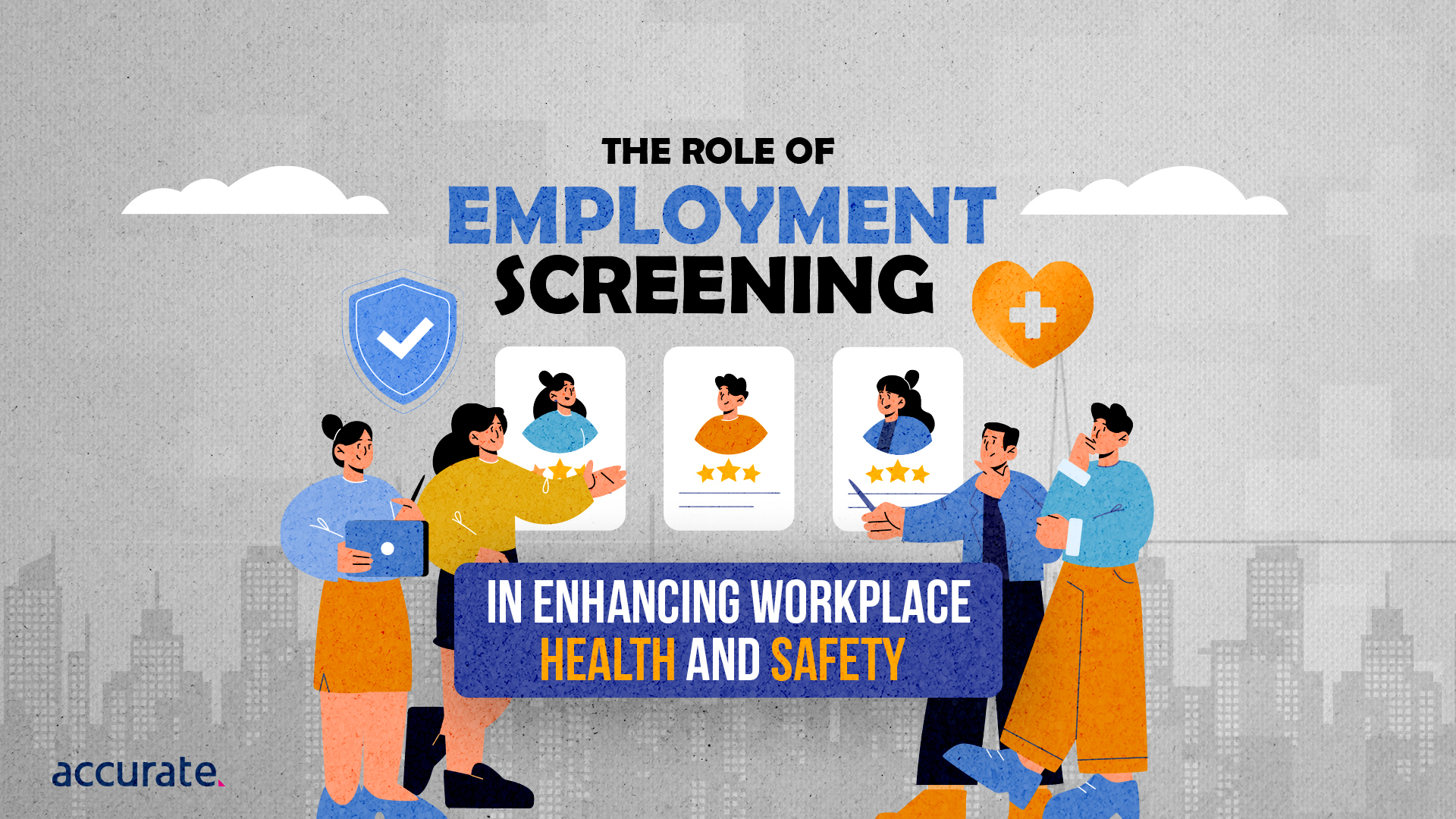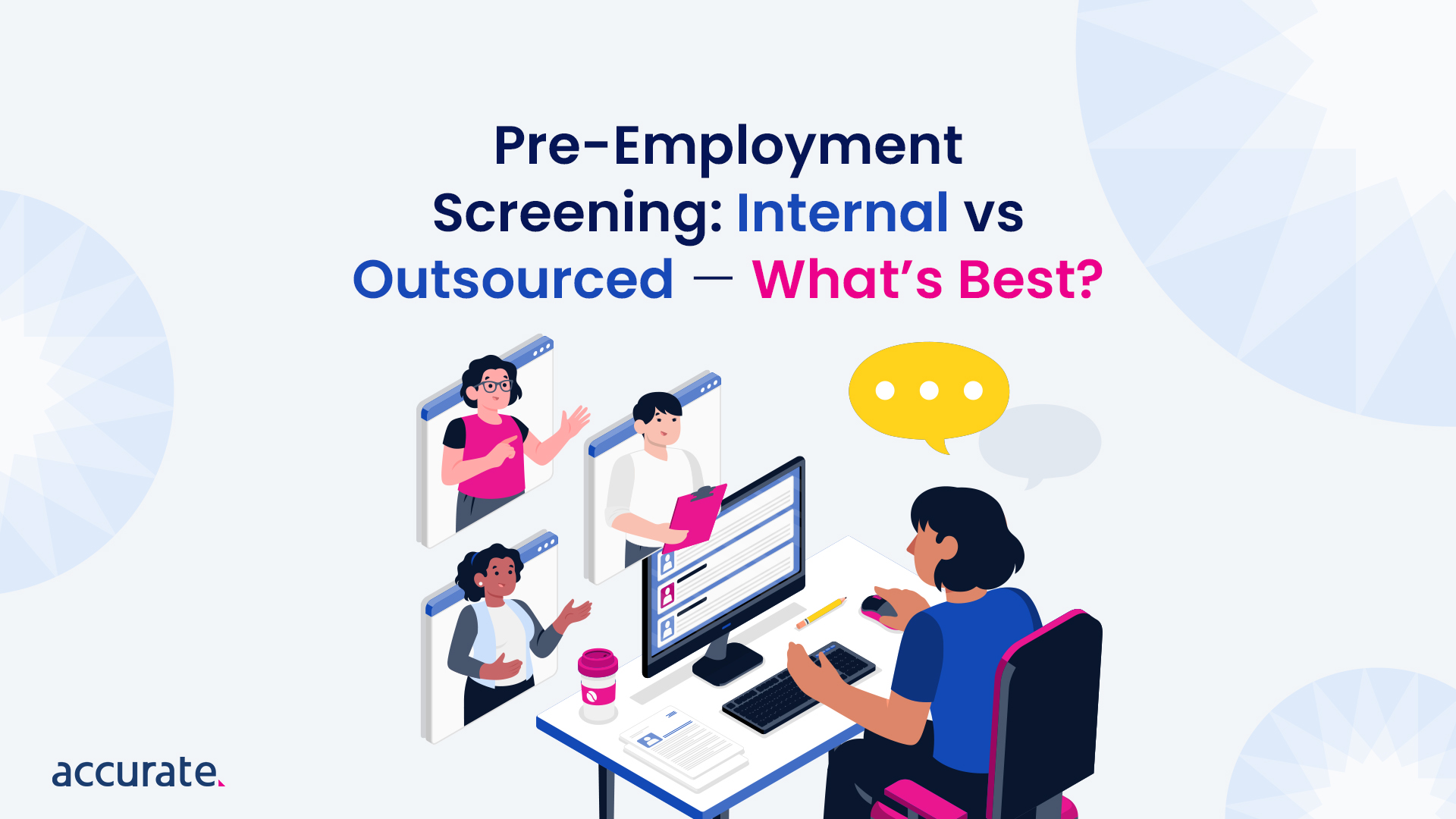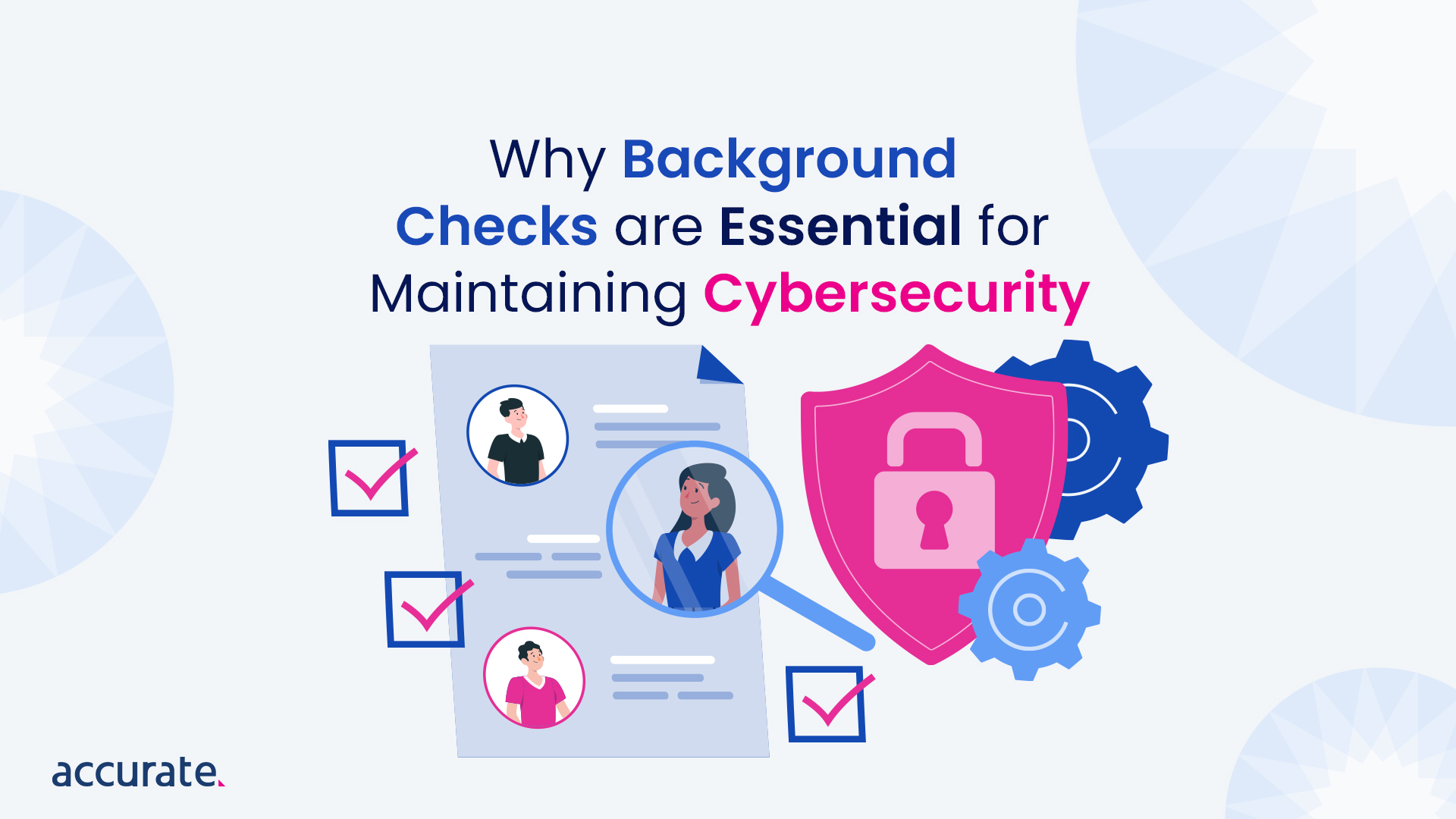DISCLAIMER: Accurate prepared these materials for informational purposes only. These materials are not intended to be comprehensive, and are not a substitute for, and should not be construed as, legal advice. Accurate does not warrant any statements in these materials. Employers should direct questions involving their organisation’s compliance with or interpretation or application of laws or regulations and any additional legal requirements that may apply, to their own legal counsel.
Employment screening practices in Australia have significantly transformed over the years. What was once a straightforward process is now an indispensable part of responsible hiring strategies.
As businesses prioritise creating safe and secure workplaces, employment screening plays a vital role in mitigating potential risks and cultivating a culture of workplace health and safety.
The purpose of this blog is to examine the strong link between screening practices and employee well-being so that potential workplace hazards can be identified and addressed proactively.
Ultimately, this approach fosters a safer and more productive work environment for all employees.
The Traditional Scope of Employment Screening
Employment screening traditionally focused on a few key areas to ensure compliance, integrity, and reliability in the hiring process. Common practices included (and still do):
- criminal history checks
- qualification verifications
- and reference checks.
These screening methods aim to confirm that potential employees have the qualifications and skills for the role while verifying their claimed background and experience.
Additionally, criminal history checks help identify any past offences or concerning behaviour that could pose a risk to the workplace or compromise the organisation’s reputation.
While these traditional screening practices are essential, they often overlook specific aspects related to workplace health and safety. As businesses increasingly prioritise creating secure and hazard-free environments, a more comprehensive approach to employment screening is necessary.
The Crucial Link Between Employment Screening and Workplace Safety
Workplace safety factors in physical and psychological well-being ensure employees can perform their duties in a secure and healthy environment.
Unfortunately, inadequate screening processes can lead to significant risks and costly incidents.
According to Safe Work Australia statistics, workplace injuries and illnesses cost the Australian economy an estimated $61.8 billion annually.
Comprehensive employment screening is vital in mitigating these risks by thoroughly vetting candidates and identifying potential red flags.
For example, a thorough screening process can uncover an applicant’s history of violent behaviour, substance abuse, or disregard for safety protocols, which could pose a threat to the well-being of colleagues and the overall workplace.
These screening procedures can help organisations proactively address potential safety concerns and foster a culture of safety, reducing the likelihood of incidents resulting in injuries, legal liabilities, or damage to the company’s reputation.
Key Components of Comprehensive Screening
Creating a truly safe workplace environment requires a multi-faceted approach to employment screening. While traditional checks like criminal history and reference verifications are still essential, a comprehensive process includes several additional key elements:
- Identity Confirmation: Verifying an applicant’s identity is the critical first step. This ensures all subsequent checks are conducted accurately and prevents cases of identity fraud that could compromise the entire process.
- Australian Police Checks: A crucial component for assessing an individual’s suitability, especially for roles involving high levels of trust or security. These checks uncover any relevant criminal history that may pose risks to workplace safety.
- Professional Reference Checks: Gaining insights into a candidate’s past workplace conduct and approach to safety protocols is invaluable. Speaking with previous employers and colleagues to ask all the right questions can reveal patterns of behaviour that written records may not show.
- Employment Verification: Confirming an applicant’s stated job history and identifying any inconsistencies or gaps is important. Unexplained periods of unemployment or misrepresented roles could indicate underlying issues.
- Qualification Screening: For roles with specific certification, education or training requirements, verifying an applicant’s qualifications is non-negotiable from a safety and compliance standpoint.
- Online Reputation Review: In today’s digital age, examining a candidate’s public online presence, including social media activity, can provide insights into their judgement, values and potential risks to an organisation’s reputation.
Key Takeaways
- Comprehensive employment screening is vital for mitigating risks and fostering workplace health and safety in Australian businesses.
- A robust screening process extends beyond just criminal checks. Verifying identities, qualifications, online presence, and employment histories provides invaluable insights.
- Thorough vetting allows employers to proactively address potential safety issues before they escalate into costly incidents or legal liabilities.
- Demonstrating a commitment to rigorous screening nurtures trust, accountability and a collective safety-first mindset among employees.
- Prioritising workplace safety through comprehensive screening is both a legal obligation and a strategic investment in long-term business resilience and success.
Partnering with experienced providers like Accurate ensures tailored screening solutions aligned with specific industry needs.



